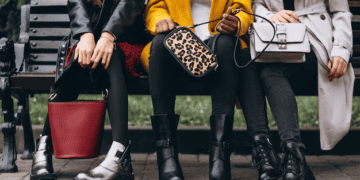Counterfeit handbags have been a longstanding presence in the market, but recent developments in the production of “superfake” replicas are challenging the conventional notions of luxury authenticity. These replicas closely resemble their high-end counterparts, making it nearly impossible for the untrained eye to distinguish the difference.
The rise of these superfake handbags has ignited a discourse on the ethics of counterfeit goods, prompting questions about the real value of luxury items. In South-East Asia, particularly in Indonesia, the increasing popularity of superfakes has brought unintended consequences for both fashion enthusiasts and regulatory authorities.
Superfakes, often meticulously handmade with premium materials, command prices comparable to their authentic counterparts. In Jakarta’s Mangga Dua market, known as “Hong Kong Alley,” these top-tier replicas of sought-after Hermès handbags can range from $1,000 to $10,000, representing a fraction of the cost of genuine items.
While the demand for luxury goods continues to grow in South-East Asia, the majority of production remains centered in China. The region faces challenges in curbing the circulation of counterfeit products, with e-commerce sales contributing to a significant increase in customs seizures due to intellectual property infringements.
The superfake trend has prompted businesses globally to offer services aimed at helping buyers verify the authenticity of their luxury purchases. The improved quality of these replicas has led to some sellers attempting to pass them off as genuine, creating disputes and legal issues.
In Indonesia, the superfake phenomenon has intertwined with discussions about the wealth of political figures, as some public servants claim to possess high-end items procured from markets like Mangga Dua. President Joko Widodo has responded by implementing a ban on government officials flaunting their wealth.
Despite efforts by Indonesian authorities to combat counterfeit goods, challenges persist in enforcing penalties, with sellers facing minimal fear of shutdown. Police Brigadier General Anom Wibowo, Director General of the Anti-Counterfeit Unit, acknowledges the difficulty in discerning real from fake amid the rise of superfakes. Authorities hope to collaborate with brand owners to address these challenges and discourage the sale of counterfeit goods.
While debates on the ethics of counterfeit luxury items continue, it is evident that the demand for high-quality replicas poses challenges to intellectual property rights and impacts businesses at various levels. The emergence of superfakes underscores the complex dynamics between authenticity, affordability, and the pursuit of luxury in the global fashion market.
Catch the latest in supply chain news on The Supply Chain Report. Visit ADAMftd.com for free international trade tools.
#SuperfakeHandbags #CounterfeitLuxury #LuxuryReplicas #FashionAuthenticity #SuperfakeTrend #IndonesiaFashion #ManggaDuaMarket #CounterfeitGoods #EcommerceCounterfeiting #HermèsReplicas #IPRChallenges #FashionEthics #IndonesiaCounterfeit #AuthenticityVerification #LuxuryGoods #PoliticalWealthDebate #CounterfeitCrackdown #SuperfakeMarket #IntellectualPropertyRights #SoutheastAsiaFashion #AntiCounterfeitEfforts

















